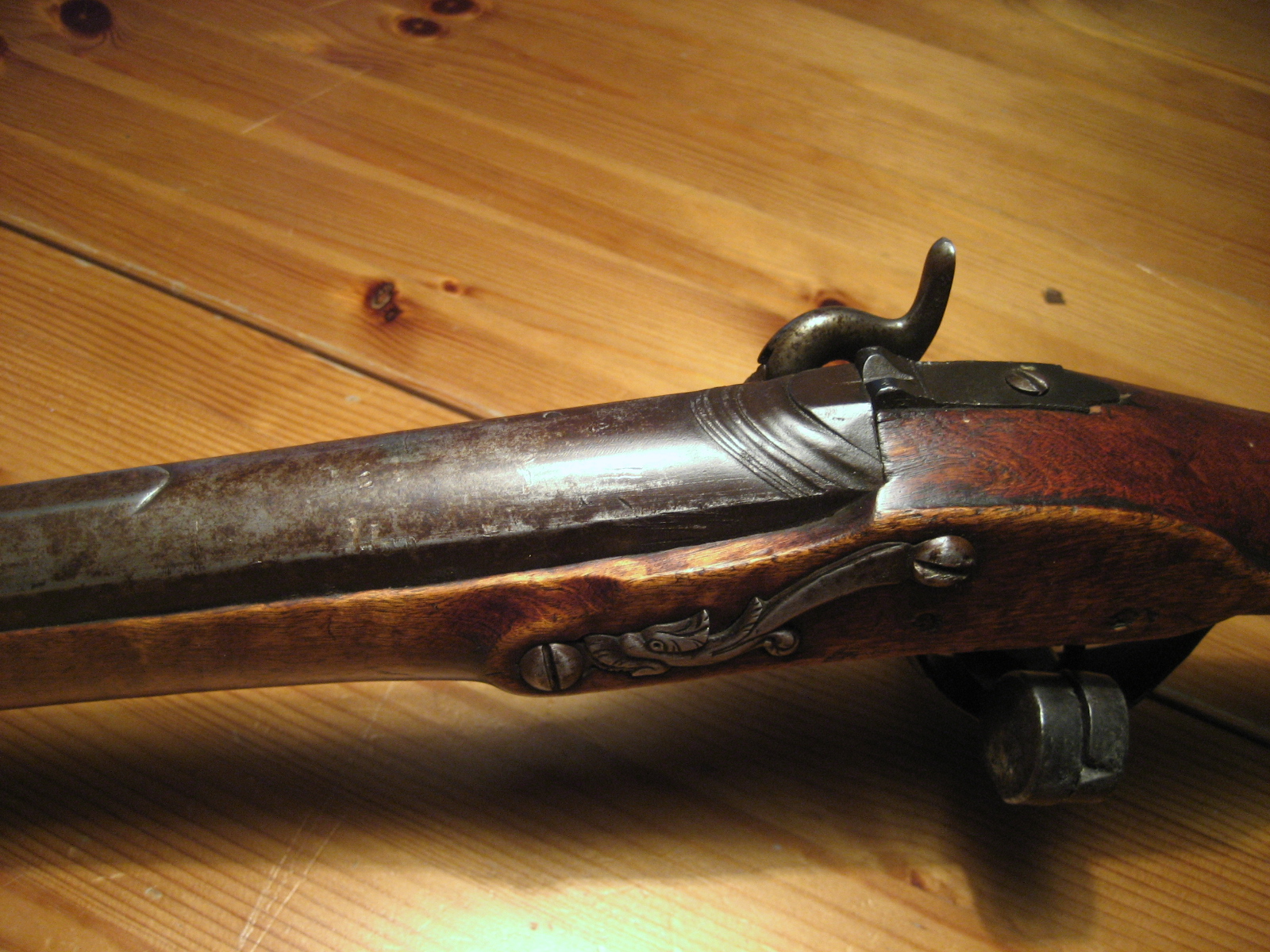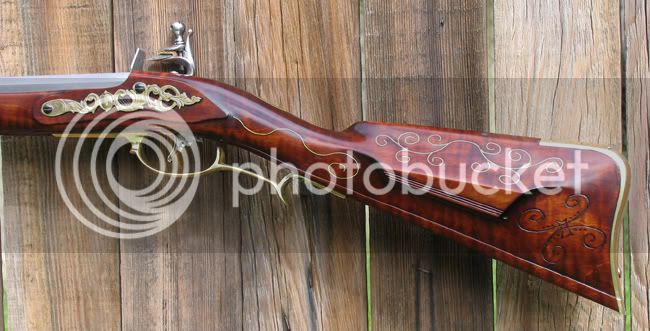This is not a identification question, more of a try to find out were a special kind of side plate ornament comes from.
I have seen several 18th and even early 19th C guns with a side plate with a similar dragon shaped sideplate. The dragons mouth is normally touching the front screw.
Just recently on this forum: http://www.muzzleloadingforum.com/fusionbb/showtopic.php?tid/264226/tp/1/
On norwegian ski-runner rifles:
http://norskevaapen.no/?p=541
(These were made in Suhl, Germany, similar one found on Herman Historica http://www.hermann-historica.de/auktion/hhm59.pl?f=NR_LOT&c=1822&t=temartic_S_D&db=kat59_s.txt )
And even one in my own collection:

This one is shortened.
I have found them both made of iron and cast in brass.
Perhaps these dragons are connected somehow, they design is quite unique, for example, look att the dragons mouth with its big lips.
Any thoughts? Comments? :hmm:
I have seen several 18th and even early 19th C guns with a side plate with a similar dragon shaped sideplate. The dragons mouth is normally touching the front screw.
Just recently on this forum: http://www.muzzleloadingforum.com/fusionbb/showtopic.php?tid/264226/tp/1/
On norwegian ski-runner rifles:
http://norskevaapen.no/?p=541
(These were made in Suhl, Germany, similar one found on Herman Historica http://www.hermann-historica.de/auktion/hhm59.pl?f=NR_LOT&c=1822&t=temartic_S_D&db=kat59_s.txt )
And even one in my own collection:

This one is shortened.
I have found them both made of iron and cast in brass.
Perhaps these dragons are connected somehow, they design is quite unique, for example, look att the dragons mouth with its big lips.
Any thoughts? Comments? :hmm:
Last edited by a moderator:







